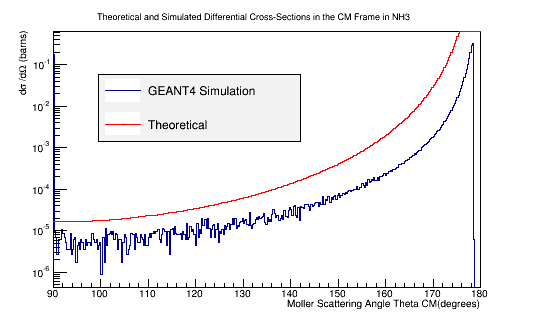Difference between revisions of "VanWasshenova Thesis"
Jump to navigation
Jump to search
| Line 68: | Line 68: | ||
==NH2 Target== | ==NH2 Target== | ||
===[[Replacing the LH2 target with an NH3 target]]=== | ===[[Replacing the LH2 target with an NH3 target]]=== | ||
| + | ==[[DV_Moller_NH3|Benchmark GEANT4's Moller scattering prediction with the theoretical cross section using NH3]]== | ||
| + | |||
| + | ==Comparison of simulation vs. the theoretical Møller differential cross section using 11 GeV electrons impinging NH3== | ||
| + | |||
| + | |||
| + | [[File:XSect_NH3.png|frame|center|alt=Theoretical and Simulated Moller Differential Cross-Section in Center of Mass Frame Frame|'''Figure 5c:''' The theoretical and simulated Moller electron differential cross-section for an incident 11 GeV(Lab) electron in the Center of Mass frame of reference for NH3 target.]] | ||
==LH2 Vs. NH3== | ==LH2 Vs. NH3== | ||
